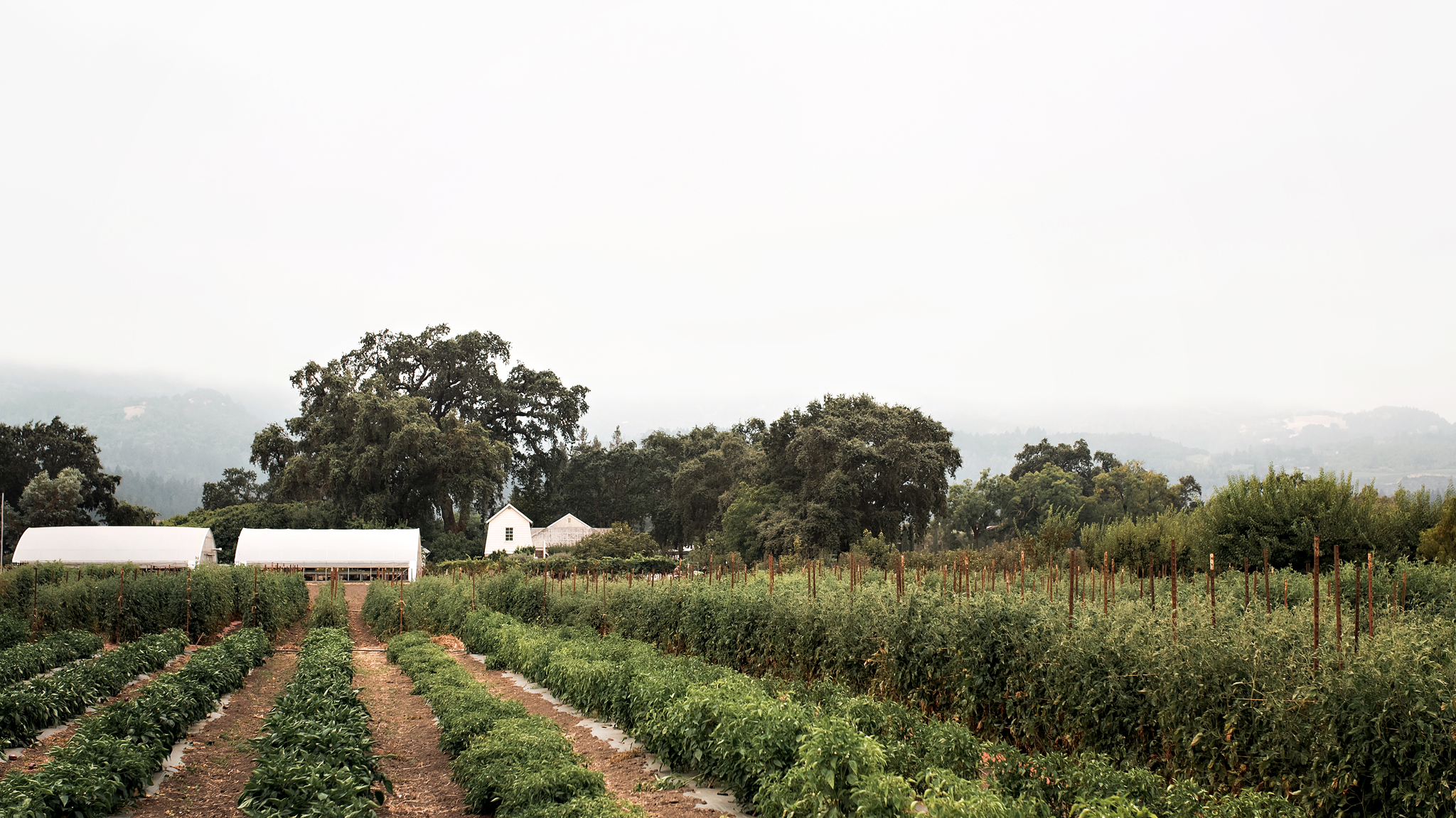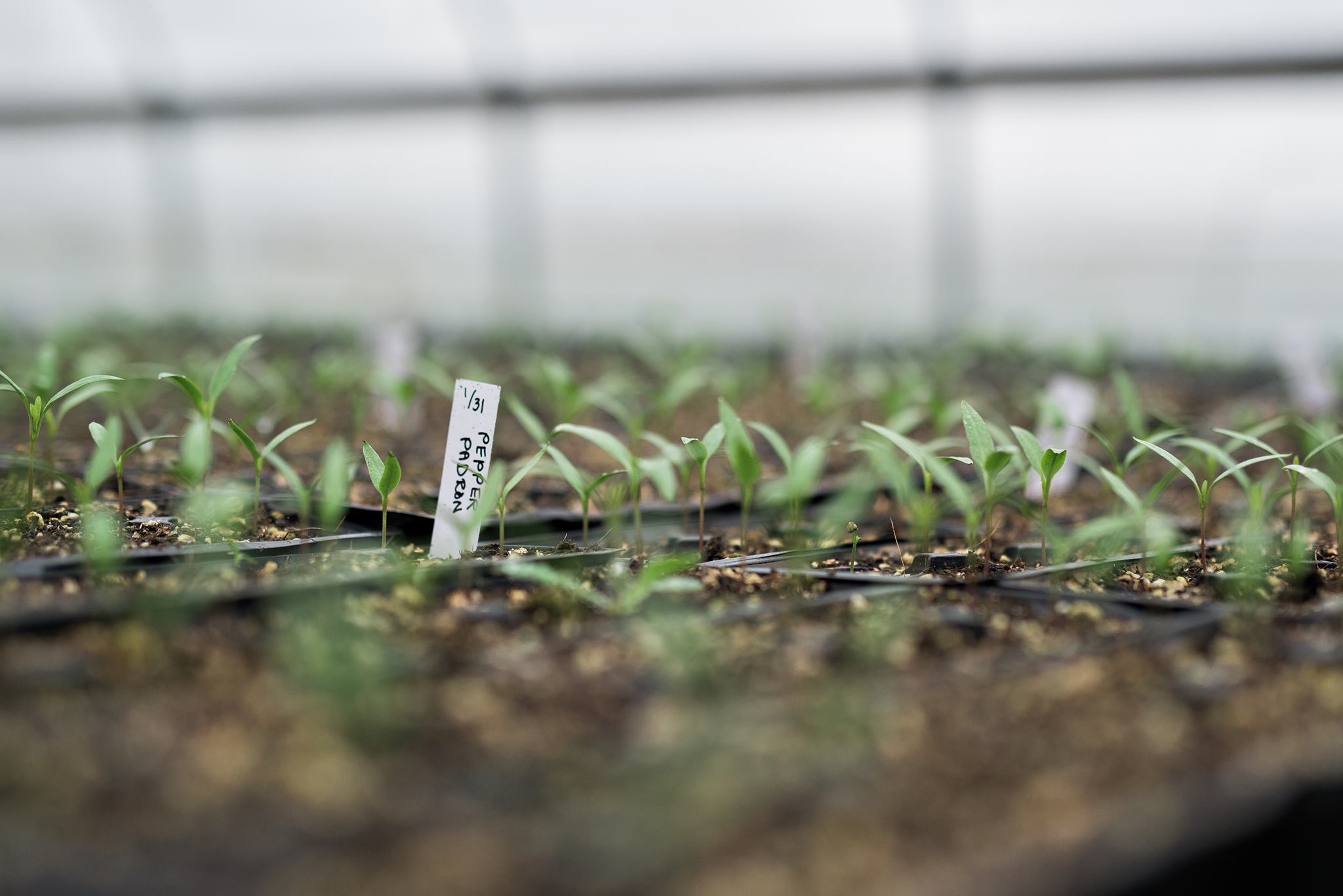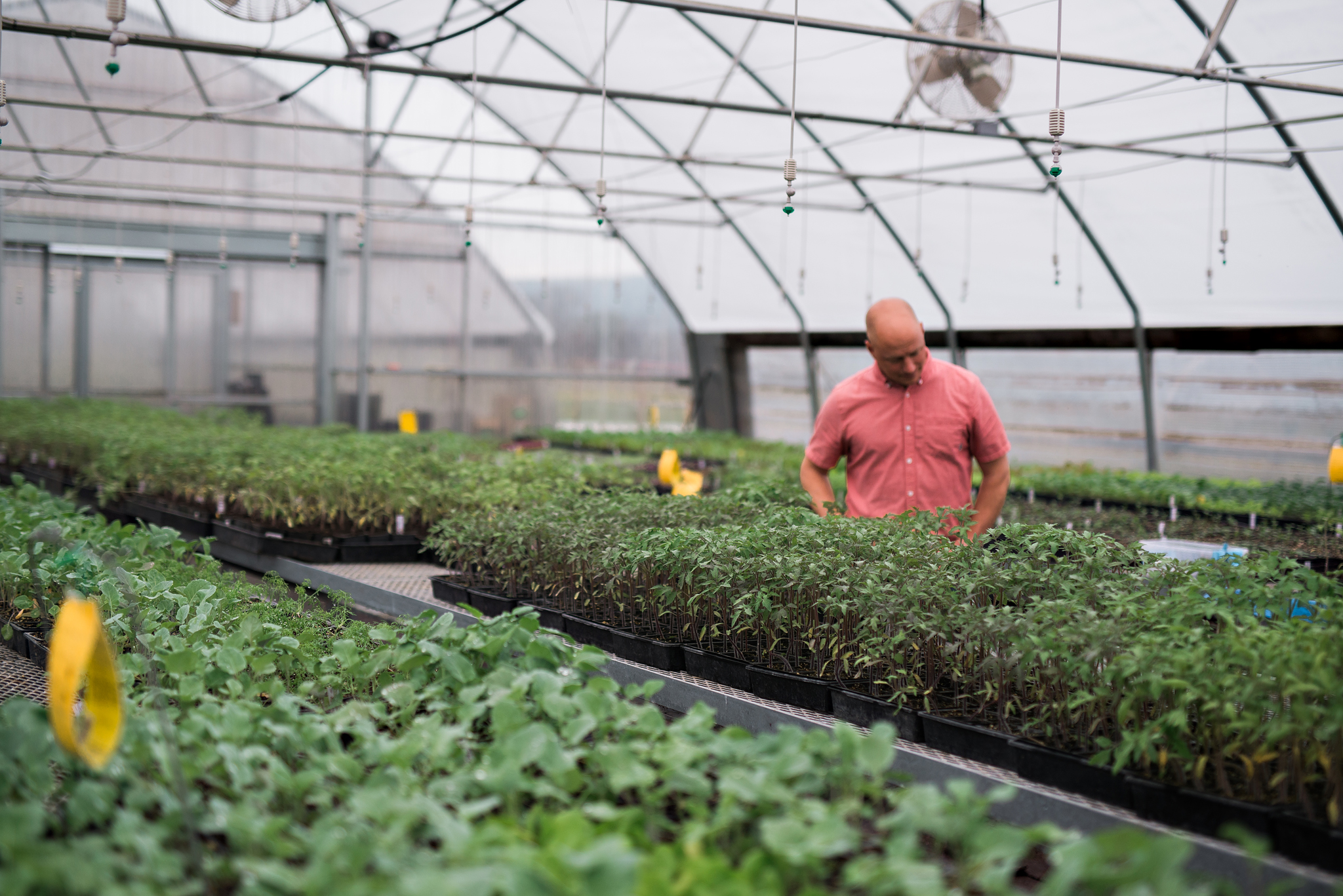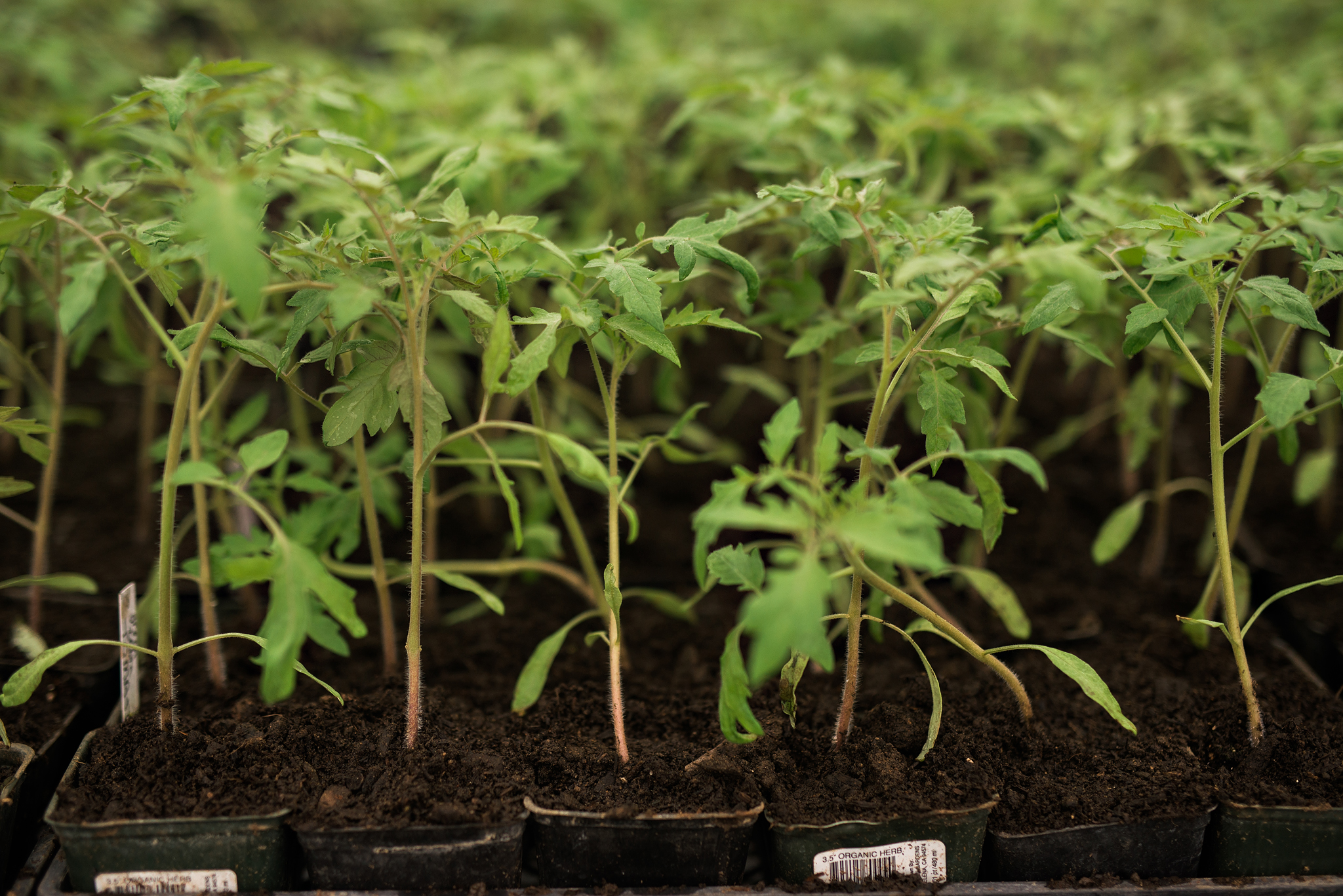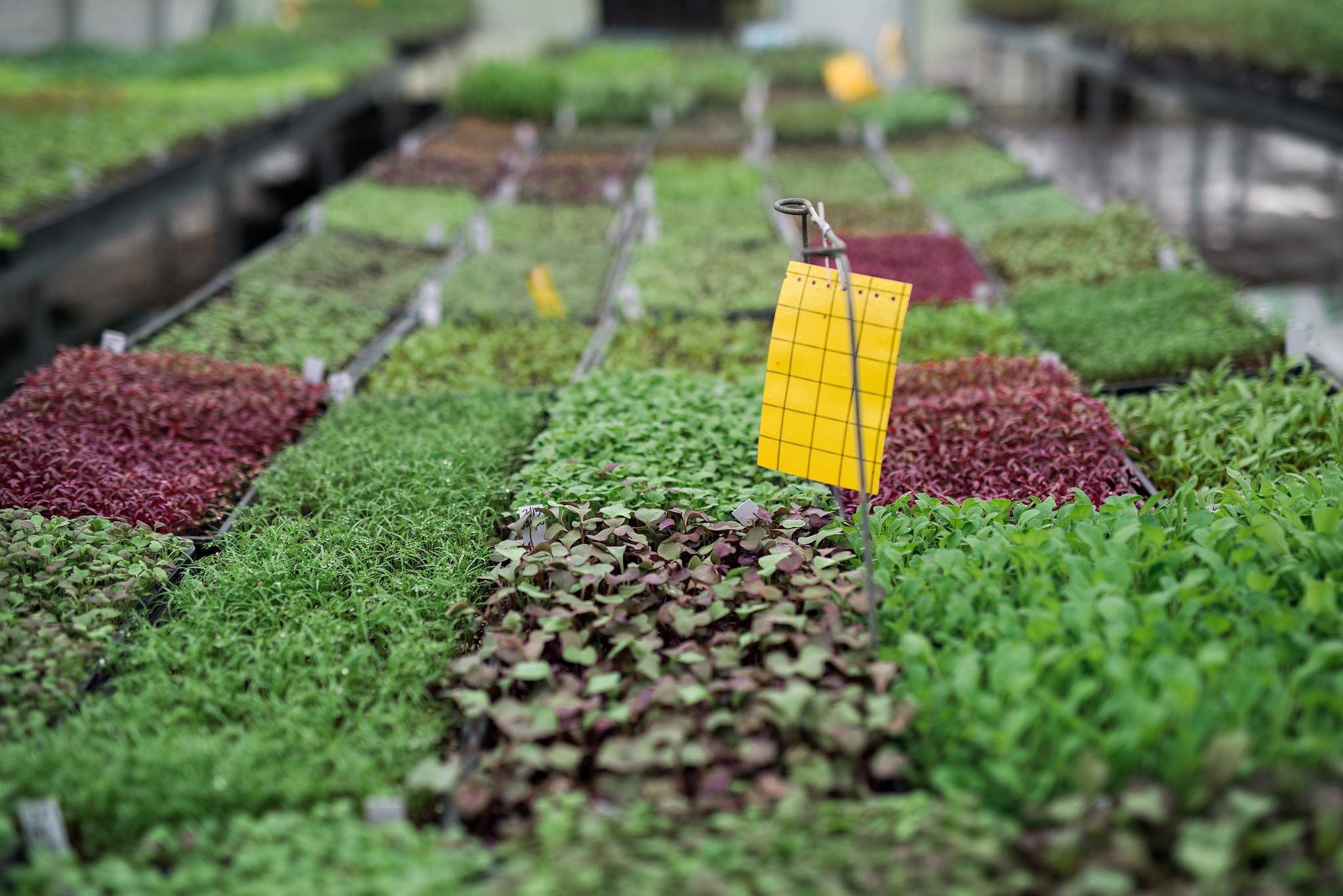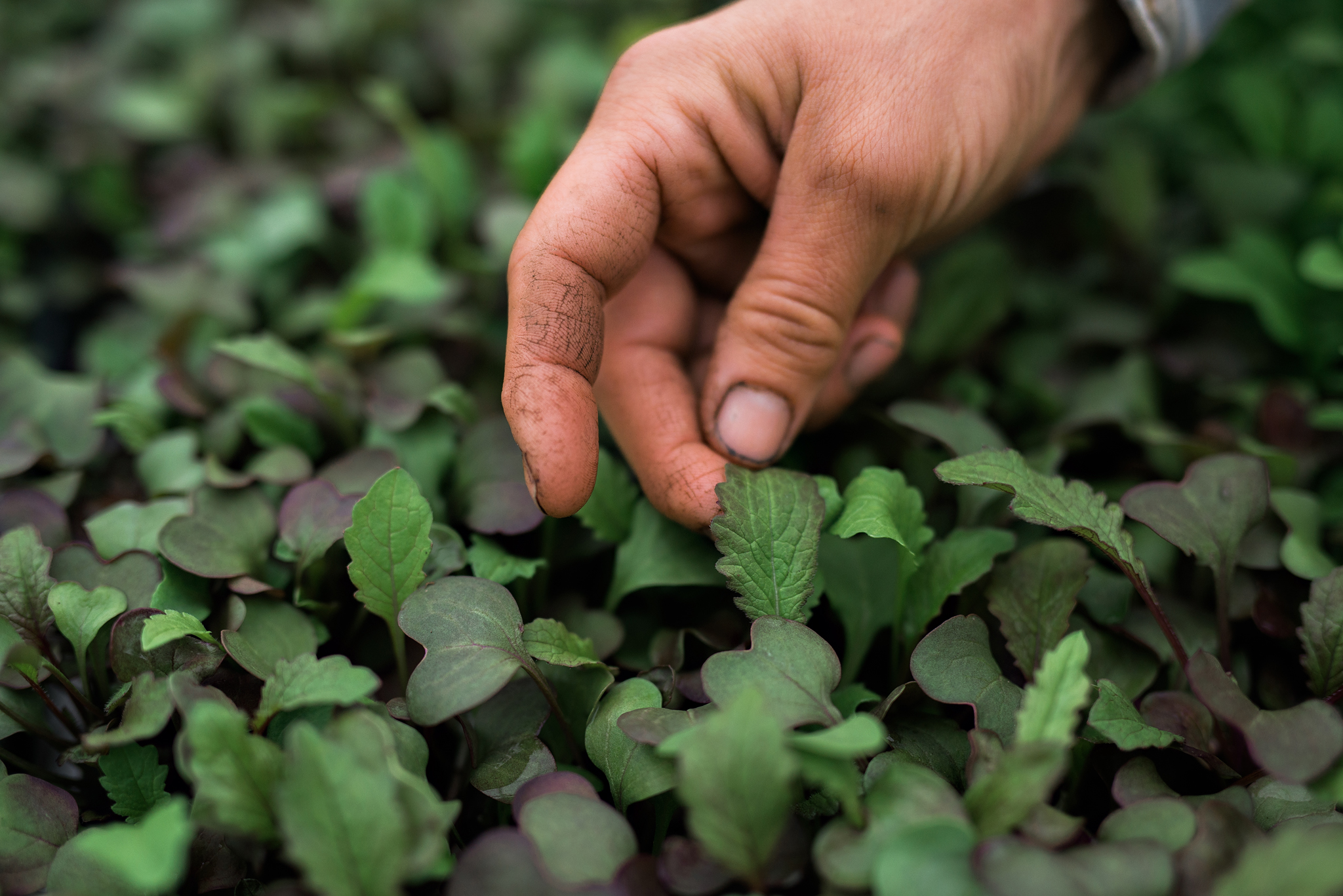Rutherford Estate – Greenhouses
Have you ever wondered where all the delicious, fresh organic produce in your Farmstead meal comes from? You’ll find the hub of our farming operation just off Highway 29 at our Rutherford Estate, where our farmers grow most of the vegetables and fruits we use at Farmstead and the Farmers’ Market. Each year, the growing season begins in the greenhouse where we cultivate seedlings for over 100 different varieties of heirloom fruits and vegetables. Come on a tour of our two greenhouses with Jess and Noel, Culinary Farm Manager and Production Coordinator, to see what’s growing.
Heading into spring, the greenhouses at our Rutherford Estate are at capacity, and our seedlings and farmers are eagerly awaiting the arrival of warmer, drier weather.
GREENHOUSE 1: THE STARTER NURSERY
Everything grown in the greenhouse is started from seed sourced from certified organic seed banks. The majority of our produce begins its growth cycle here.
Greenhouse 1 is kept at a balmy 75 degrees. Seeds are planted directly in a small tray of unfertilized soil then nurtured until they sprout. Once they have two true leaves, we move them to our second greenhouse.
GREENHOUSE 2: THE COOL HOUSE
Greenhouse 2 is kept at a slightly lower temperature. As we transfer the seedlings into this greenhouse, we start to fertilize them, about once a week. We use fish emulsion and a probiotic mix to promote equal root and leaf growth.
The seedlings are coddled in the greenhouses with the warm temperatures and lack of exposure to the natural elements (temperature fluctuation, full sun exposure, wind) so they need to be prepared for their eventual transplant to the fields. To prepare them, they are placed outside daily for an increasing amount of time, until they are stable enough to be transplanted. This process is called “hardening off” and is done to prevent transplant shock.
WHAT’S GROWING ON
We are seeding some popular summer crops including tomatoes, peppers, and eggplant, as well as multiple varieties of microgreens, which are grown year-round in the greenhouses.
Next month melons and cucumbers will be seeded. These crops grow much faster than the other summer crops, so they are started slightly later. Melons and cucumbers will go from seed to planting in only a month, whereas tomatoes and peppers need at least six weeks before planting.
TOMATOES
Tomato season is the best time of the year at Farmstead. Our dishes are full of color with a variety of heirloom tomatoes to choose from – copia, cherokee purple, lucid gem, and green zebra. Fried green tomatoes are typically on the menu starting in July, followed by the ripe tomatoes in August.
This year we aim to get ripe tomatoes on the table a little sooner than in the past, possibly as early as June. Jess is growing some of the crop in large containers along the inside edges of the greenhouse, giving them a jumpstart on growth while it is still too cold outside. These plants will come to full maturity inside the greenhouse and be ready for harvest in June. The rest of the tomatoes will be transplanted to the field when warmer Napa Valley nights are here to stay and will be ready to eat later in the summer.
MICROGREENS
Greenhouse 2 is currently full of microgreens. All of the microgreens for the restaurant and Chef’s Table are grown in the greenhouses. Once they are ready for harvest, our farm team delivers them in their trays to the restaurant. The culinary crew then cut and plate them as needed. Anything that isn’t used travels back to the farm for composting.
When it comes to choosing what greens to grow, our farmers focus on color. The chefs like a variety of colors for the plate, so we grow beets, chard, radishes, amaranth for their hues of red and yellow. We also grow arugula, tatsoi, celery, and basil. An assortment of microgreens creates a beautiful texture on the plate.
For Chef’s Table, Estate Chef Aaron prefers a different variety of greens and for them to be bigger than what is used in the restaurant, so our farmers mixed and planted a specific blend of seeds just for Chef’s Table. This year they are also growing radishes and turnips, which are kept small. Chef Aaron simply rinses them off and plates them.

